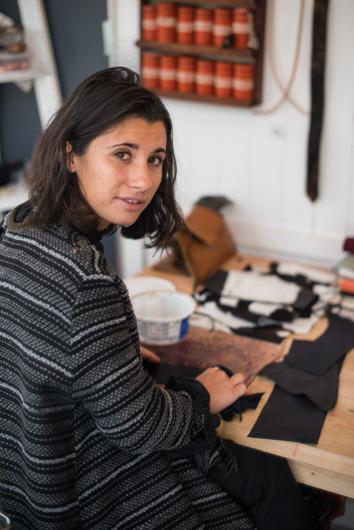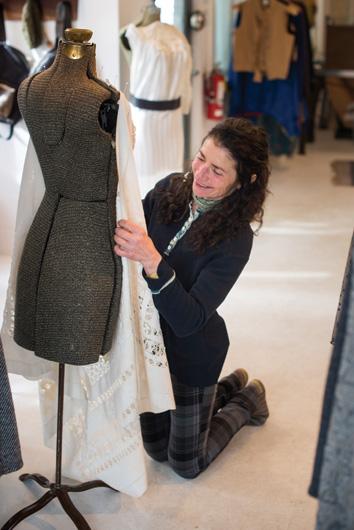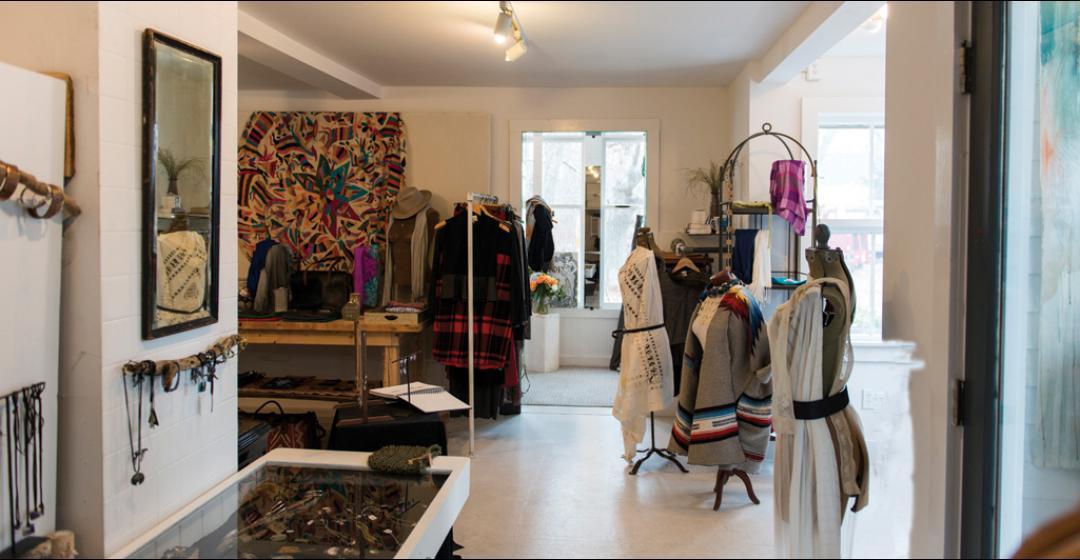When Randi Sylvia was a little girl she wouldn’t go to the grocery store until she had clipped a hundred barrettes into her hair. “From day one she was obsessed,” said her mother, Marlene DiStefano. DiStefano recognized her daughter’s blooming interest in fashion and encouraged it from the very beginning.
Inside Studioshop, the Oak Bluffs store they now co-own, the two women sat surrounded by their creations. Leather and tweed mingled on the clothing racks. Wool vests backed with Southwestern prints claimed a cool corner of the room. Flowing transparent patterned dresses stood to the side as a reminder: beach days will return.

Here in their corner of the Oak Bluffs Arts District, the two create clothing and accessories under their label, Kenworthy Designs (kenworthydesigns.com). DiStefano, a tiny woman with a boisterous laugh, obviously gave her daughter her wavy dark hair. But she doesn’t take credit for her offspring’s innate love of fashion. As a child Sylvia asked her mom to create everyday costumes for her. “She would tell me exactly what she would want,” said DiStefano, “and whether it was right or not.” Often, their sentences end in a chorus as one chimes in on the other’s last few words.
They still spend a lot of time creating together: sewing in their narrow, light-filled studio, business-planning, and traveling to collect materials and inspiration. Though their work is designed and created on the Vineyard, their ideas come from all over the world, and they can go back and forth sharing stories from their first mother-daughter fashion-focused trip, to Argentina in 2009: the “little spitfire” Englishman who owned the hostel, the night Sylvia was called away from her glass of wine to spin with a professional tango dancer.
Mostly, though, they remember the markets. “We would wake up every morning and look through our travel book,” DiStefano said. “We would find a new market, a new place to go, and we would trot the whole time. We never took any buses or anything like that. We just would get up and start walking.”

“Both of us can literally just walk around and look at things all day,” echoed her daughter. “That’s what we like to do when we travel.”
After Argentina the two took solo trips – DiStefano went to New Zealand and Guatemala and Sylvia went to Nicaragua, England, France, Portugal, and Morocco. They travelled together again in Italy.
“We find fashion in so much more than just clothing,” DiStefano said. In Sicily they found it in food, and in Morocco fashion was in the architecture. Their most inspiring encounters, however, were in workshops, studios, or street-side workspaces. In New Zealand it was women spinning yarn; in Argentina it was people sewing clothing in the co-ops; and on the island of Capri it was an old man making leather shoes. His thick fingers built dainty sandals that hung on the walls all around his shop. Colored leather sliced to the width of a centimeter was a kaleidoscopic jumble of lime green, gold, blue, brown, and periwinkle.
On their own island, Sylvia and DiStefano have created something very similar, a shop and workspace that are open to visitors. Stacks of fabric and leather line one wall. Their sewing machines stand on a wooden table and drawings, swatches, and scissors hang on the wall above them. Finished goods are displayed in a larger room. Entering customers are most often greeted by the clattering of sewing machines.
Stories accompany each piece of clothing that’s for sale. A jacket was inspired by the tailored black-and-white warmth of a winter day in France; a cape pattern was created using a similar piece picked up in Portugal. Sylvia’s leather belts host buckles from flea markets around the world. “I don’t mind borrowing bits and pieces because I feel like the way you put it together is the fresh idea,” said DiStefano.
Collaborating keeps them inspired. “I may have an idea, but then she’ll develop it a little bit further,” DiStefano explained. “Or it goes the opposite way where she’ll have an idea and I’ll say, ‘what if we switch this around or that around?’ ”
In other words, the side-by-side venture is a fitting progression from their days of a hundred barrettes and childhood costumes.





